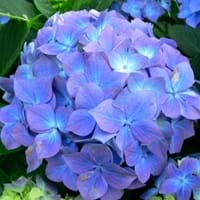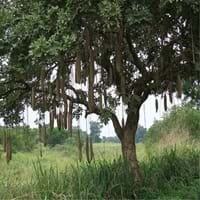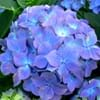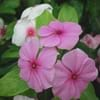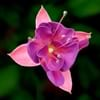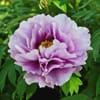Life Span
Perennial
Perennial
Origin
China, Indonesia, Japan, Korea, The Hiamalayas
Eastern Africa, Middle Africa
Types
Bigleaf hydrangea, Hortensia, Smooth hydrangea, Oakleaf hydrangea, Annabelle
Not Available
Number of Varieties
Not Available
Habitat
Forest margins, Hillside, Woods
Riverine forest, wooded grassland
USDA Hardiness Zone
3-9
9-12
Sunset Zone
A3, 1a, 1b, 2a, 2b, 3a, 3b, 4, 5, 6, 7, 8, 9, 10, 11, 12, 13, 14, 15, 16, 17, 18, 19, 20, 21
H1, H2, 12, 13, 19, 20, 21, 22, 23, 24
Habit
Oval or Rounded
Arching/Fountain-shaped
Flower Color
Blue, Dark Purple, Light Purple, Red, White
Dark Red, Tan
Flower Color Modifier
Not Available
Bicolor
Fruit Color
Not Available
Tan
Leaf Color in Spring
Green
Green, Dark Green
Leaf Color in Summer
Green, Dark Green
Green, Dark Green
Leaf Color in Fall
Dark Green, Yellow, Yellow green
Green, Dark Green
Leaf Color in Winter
Not Available
Not Available
Leaf Shape
Oblovate
Pinnate
Plant Season
Early Spring, Late Autumn
Spring, Summer, Fall, Winter
Sunlight
Full Sun
Full Sun
Type of Soil
Light
Loam, Sand
The pH of Soil
Acidic
Acidic, Neutral, Alkaline
Soil Drainage
Well drained
Average
Bloom Time
Spring, Summer
Indeterminate
Tolerances
Not Available
Drought, Salt
Where to Plant?
Ground, Pot
Ground
How to Plant?
Seedlings, Stem Planting
Seedlings
Plant Maintenance
Medium
Medium
Watering Requirements
Keep the ground moist but not water-logged, Requires regular watering, Use and maintain water-efficient soaker hoses, Water twice a day in the initial period
Needs a lot of water initially
In Summer
Lots of watering
Lots of watering
In Spring
Moderate
Moderate
In Winter
Average Water
Average Water
Soil pH
Acidic
Acidic, Neutral, Alkaline
Soil Type
Light
Loam, Sand
Soil Drainage Capacity
Well drained
Average
Sun Exposure
Full Sun
Full Sun
Pruning
Cut or pinch the stems, Do not prune during shooting season, Prune lower leaves, Prune to stimulate growth, Remove dead or diseased plant parts
Remove damaged leaves, Remove dead branches, Remove dead leaves
Fertilizers
All-Purpose Liquid Fertilizer
Balanced liquid fertilizer monthly
Pests and Diseases
Anthracnose, Cercospora leaf spot, Mushroom root rot, Powdery mildew
Leaf spot, Mealybugs, Rust
Plant Tolerance
Drought
Drought
Flower Petal Number
Single
Single
Foliage Texture
Coarse
Coarse
Foliage Sheen
Matte
Glossy
Attracts
Bees, Flies
Bees, Birds, Butterflies, Not Available
Allergy
Chest tightness, Diarrhea, Dizziness, Nausea, Vomiting
Poisonous when unripe
Aesthetic Uses
Showy Purposes
Not Available
Beauty Benefits
Not Available
Acne, Slow downs aging
Environmental Uses
Air purification
Air purification
Medicinal Uses
Fever, Kidney problems, Urinary tract problems
Gynaecological, Malaria, STDs
Part of Plant Used
Flowers, Root
Dried seeds, Leaves
Other Uses
Not Available
Used to flavour beer, Used to produce a red dye
Used As Indoor Plant
No
No
Used As Outdoor Plant
Yes
Yes
Garden Design
Not Available
Feature Plant, Shade Trees, Tropical
Botanical Name
Hydrangea
KIGELIA africana
Common Name
Hydrangea or hortensia
Sausage Tree
In Hindi
Hydrangea
Sausage Tree
In German
Hortensie
Sausage Tree
In French
Hortensia
saucisse Arbre
In Spanish
Hortensia
Árbol de salchicha
In Greek
υδραγεία
λουκάνικο δέντρο
In Portuguese
Hortênsia
Árvore de salsicha
In Polish
Hortensja
kiełbasa Drzewo
In Latin
Hibiscus
farciminis ligno
Phylum
Magnoliophyta
Magnoliophyta
Class
Magnoliopsida
Magnoliopsida
Family
Hydrangeaceae
Bignoniaceae
Genus
Hydrangea
Kaempferia
Clade
Not Available
Angiosperms, Asterids, Eudicots
Tribe
Not Available
Tecomeae
Subfamily
Not Available
Not Available
Number of Species
Not Available
Importance of Hydrangea and Sausage Tree
Want to have the most appropriate plant for your garden? You might want to know the importance of Hydrangea and Sausage Tree. Basically, these two plants vary in many aspects. Compare Hydrangea and Sausage Tree as they differ in many characteristics such as their life, care, benefits, facts, etc. Every gardener must at least have the slightest clue about the plants he wants to plant in his garden. Compare their benefits, which differ in many ways like facts and uses. The medicinal use of Hydrangea is Fever, Kidney problems and Urinary tract problems whereas of Sausage Tree is Gynaecological, Malaria and STDs. Hydrangea has beauty benefits as follows: Not Available while Sausage Tree has beauty benefits as follows: Not Available.
Compare Facts of Hydrangea vs Sausage Tree
How to choose the best garden plant for your garden depending upon its facts? Here garden plant comparison will help you to solve this query. Compare the facts of Hydrangea vs Sausage Tree and know which one to choose. As garden plants have benefits and other uses, allergy is also a major drawback of plants for some people. Allergic reactions of Hydrangea are Chest tightness, Diarrhea, Dizziness, Nausea and Vomiting whereas of Sausage Tree have Poisonous when unripe respectively. Having a fruit bearing plant in your garden can be a plus point of your garden. Hydrangea has no showy fruits and Sausage Tree has showy fruits. Also Hydrangea is flowering and Sausage Tree is not flowering . You can compare Hydrangea and Sausage Tree facts and facts of other plants too.
